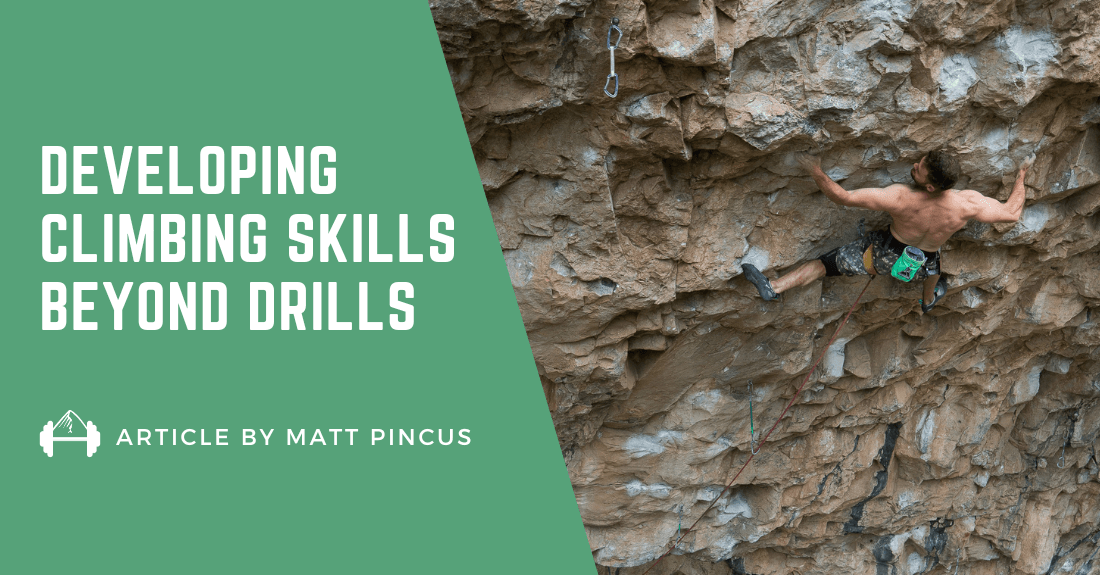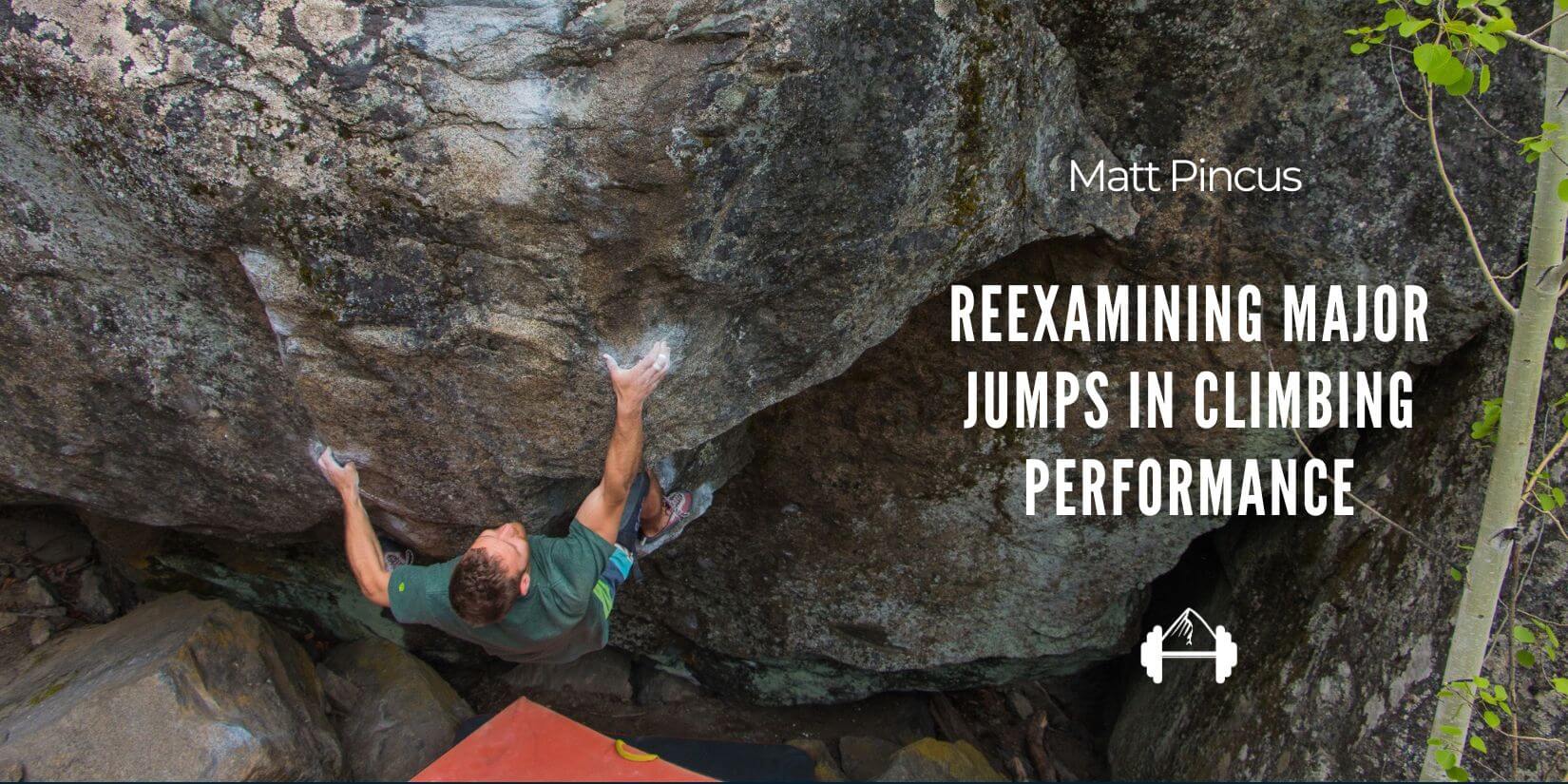One of my favorite parts of being a climbing coach is the tremendous amount of continual learning that’s part of the job. Reading and researching climbing training are definitely huge sources of knowledge, but there’s no substitute for insights I gain through working directly with the athletes I coach and through experimenting with my own training.
Today, in the spirit of doing even better in 2020, I want to share the top 3 training lessons I learned as a coach and a climber in 2019:
- Simplify with two questions
- Structure your training so you feel yourself improve
- Finish the program

1. Simplify with Two Questions
There’s a lot of information available on how to train for climbing. Unfortunately, I’m finding that this increasingly leads to paralysis by choice. I’ve written before about how we can’t fit everything into our training and why we shouldn’t try (Matt Pincus: Fitting Everything In). I still think the advice in this article is solid. Start with a goal, target weaknesses, stick to principles, and keep the goal the goal. Those tenets are my basic training philosophy, but I’ve noticed we all need something we can turn to to help answer the day-to-day question of, “Well, what should I be doing then?”
Unfortunately, there’s no one-size-fits-all advice I can give here about what everyone should be focusing on beyond keeping your training simple and targeted. The more training programs I write, the more I’m finding that these are the programs that work best. The issue is getting to that simple, focused program. Personally, I start with a single thing I want to improve. Then, I make it a priority and attack it. Ideally, whatever you are targeting is a weakness or something preventing you from reaching your goal, but we all know that pinpointing weaknesses can be difficult. Regardless, pick something you feel you need to work on and make it the priority for your next cycle.
Once you’ve picked a focus and written a program to attack it, ask these two questions about everything included in the program to ensure that your program is actually targeted:
- Why is it in the program?
- How is this exercise/drill/session going to be progressed over time?
If I don’t have a clear answer to both of these questions for something in the program, then I delete it. It’s as simple as that.
Using these questions is how I’ve been holding myself accountable to keeping programs focused both for my athletes and for my own training. The way it works is the first question ensures that you don’t have anything superfluous included and, as a result, you can really direct your efforts to whatever weakness you are trying to target. The second question, on the other hand, makes sure you don’t end up spinning your wheels. Repeating the same exercises or workouts at the same intensity is a great way to get tired. Progressing exercises/workouts over time is how we actually improve and turn weaknesses into strengths. When writing a program, you want to have a clear plan for how you are going to progress everything in it so that you avoid wasting energy on something that is no longer effective.
If you really commit to using these two questions, at first it’ll be hard to give up some of the old exercises you were doing. You’ll probably be watching everyone around you packing their training full of more and more. Stick with it, though. Once you feel yourself really making progress, you’ll be hooked. Plus, you won’t care about all the other exercises your peers are doing while you’re the one sending your project.

Annie Chouinard on the Red River Gorge’s Kaleidoscope 5.13c | Photo: Matt Pincus | @mpincus87
2. Structure Your Training So You Feel Yourself Improve
No pain no gain, right! Well, not really.
We all like the stories where someone reaches their goals through training harder than ever before. Cue the “Rocky” theme song and the exercise montage.
Climbing even has these stories featuring top athletes and the insane amount of training they can handle. These stories are no doubt motivational and we all want to feel like we are working hard to reach our goals. However, what these stories don’t account for is that most of us can’t handle that kind of training volume and recover from it effectively. Yes, you may be able to grin and bear it for a while, but in my own climbing and with my athletes’ training, I’ve noticed that the most productive training cycles aren’t the ones where we really need to go into the pain cave session after session and finish the cycle mentally and physically exhausted. Instead, they are the ones where you build momentum session to session and feel yourself making progress over the course of the cycle.

Don’t get me wrong. I’m not suggesting that you shouldn’t train hard. You definitely need to put the effort in if you want to improve. That said, I think we can all get caught up in our training and go down the path of always trying to do more or do things at a higher intensity. If you do that indefinitely or even every training cycle, it’s a quick recipe for injury or burnout.
While this sounds obvious, it’s an easy trap to fall into. I know I’ve been there personally and seen it happen to some of my athletes despite both of our best efforts. These overly intense cycles may make you feel like you’re putting the work in, but, in my experience, they don’t lead to sending.
If you finish a training cycle feeling destroyed and like you need to take a break from climbing, that’s a failure. Isn’t it better to feel yourself improving over the course of a training cycle and let that momentum turn into confidence you can carry with you into your performance phase or on a trip? Remember, we are climbers. Training is what we are doing to give us a chance to perform well and reach our goals. If your training isn’t supporting your efforts on your goal climbs, then you’re missing the boat.
Let’s put it even more succinctly. If you aren’t getting better, then there’s something wrong.
The takeaway lesson here is to structure your training so that you can feel yourself improving over the course of the cycle. This improvement builds momentum and that momentum creates confidence. Let’s be clear. Not every session needs to feel great. Progress just doesn’t happen in such a linear fashion, but the general trend in your climbing should be one of improvement. This trend of improvement doesn’t need to just be measured by sends. It can also be that you are improving in whatever area you were trying to target in your training. The bottom line is it’s important that you are improving.
If you’re not, you are probably doing too much in your training and spreading yourself too thin. I suggest simplifying. To do so, return to the two questions from the first lesson and use them to eliminate everything that’s not essential.
3. Finish the Program
This one should be a no-brainer: Doing the training is obviously required for it to work. When I look at which of my athletes are actually making progress, it’s the ones who are getting the sessions in and seeing the plan we’ve made through to the end. Additionally, like many/most of us, I’ve failed to do this many times and been left wondering why I’m not improving. Conversely, I have also made profound progress in my climbing when I actually managed to see a program all the way through to completion.
Adaptation happens through doing the sessions. There are no “magic” exercises that make you stronger by doing them once. Exercises and workouts need to be repeated for your body to adapt to them and come out stronger or fitter. Simply put, you’ve got to give the plan a chance to work.
The problem, however, arises because we all care A LOT about our climbing. This can lead to anxiety about our training, constantly second-guessing if we are following the “perfect” training plan, and then bounding from plan to plan, protocol to protocol. However, in doing so, you never give a program a chance to work and it may have been what you needed all along. Next time you start a program, break this cycle and finish it.

Lauren Callaway sending Killer Bees 5.13d | Photo: Matt Pincus | @mpincus87
Nowhere is this commitment to finishing a program more important than when you are taking a plan from a training book or the internet. If you’re plugging a pre-written plan into your training, then chances are you respect the coach that wrote it. Trust them and remember they probably picked the number of sessions or the duration of the program for a reason. See it through to the end before making a judgment on whether or not it’s effective.
In other words, don’t judge a program by the first session or the first week. If you make the commitment to start it, see it through to the end – even if that means extending the cycle a week or two to get the sessions in. Then and only then can you effectively evaluate if it actually worked or not.
Alright, there you have it. Those are my main three takeaways from another year of training and coaching. Hopefully, these lessons resonate with you and help you in your training in 2020. As you can see, a lot of what I learned in 2019 had to do with simplifying training programs, adjusting training to the appropriate volume, and respecting the long-term process of improvement. Even if my lessons don’t hit home for you personally, I hope that my writing them inspires you to reflect on your climbing and training in the past year. Last year may be behind you but that doesn’t mean you can’t learn from it and leverage that knowledge to achieve your goals in the coming year. I know that’s what I’ll be doing.
Cover Photo: Devlin Junker sending The Strawberry Roan 5.13d | Photo: Matt Pincus | @mpincus87

About The Author, Matt Pincus
Matt is a boulderer and a sport climber from Jackson, Wyoming. He spends most of his time on the road living out of his van. Matt is responsible for most of the blog posts and social media posts for TrainingBeta and is our head trainer. He’s a seasoned climber and coach who can provide you with a climbing training program from anywhere in the world based on your goals, your abilities, the equipment you have, and any limitations you have with time or injuries.
Train With Matt
Matt will create a custom training program designed to help you target any weaknesses so you can reach your individual goals. Whether you need a 4-week program to get you in shape for an upcoming trip or a 6-month program to make gradual strength gains, he’ll create a weekly schedule of climbing drills, strength exercises, finger strength workouts, and injury prevention exercises tailored to your situation.

Matt Pincus sending Ghost Moon 5.13d/8b at The Wild Iris, WY





Leave A Comment